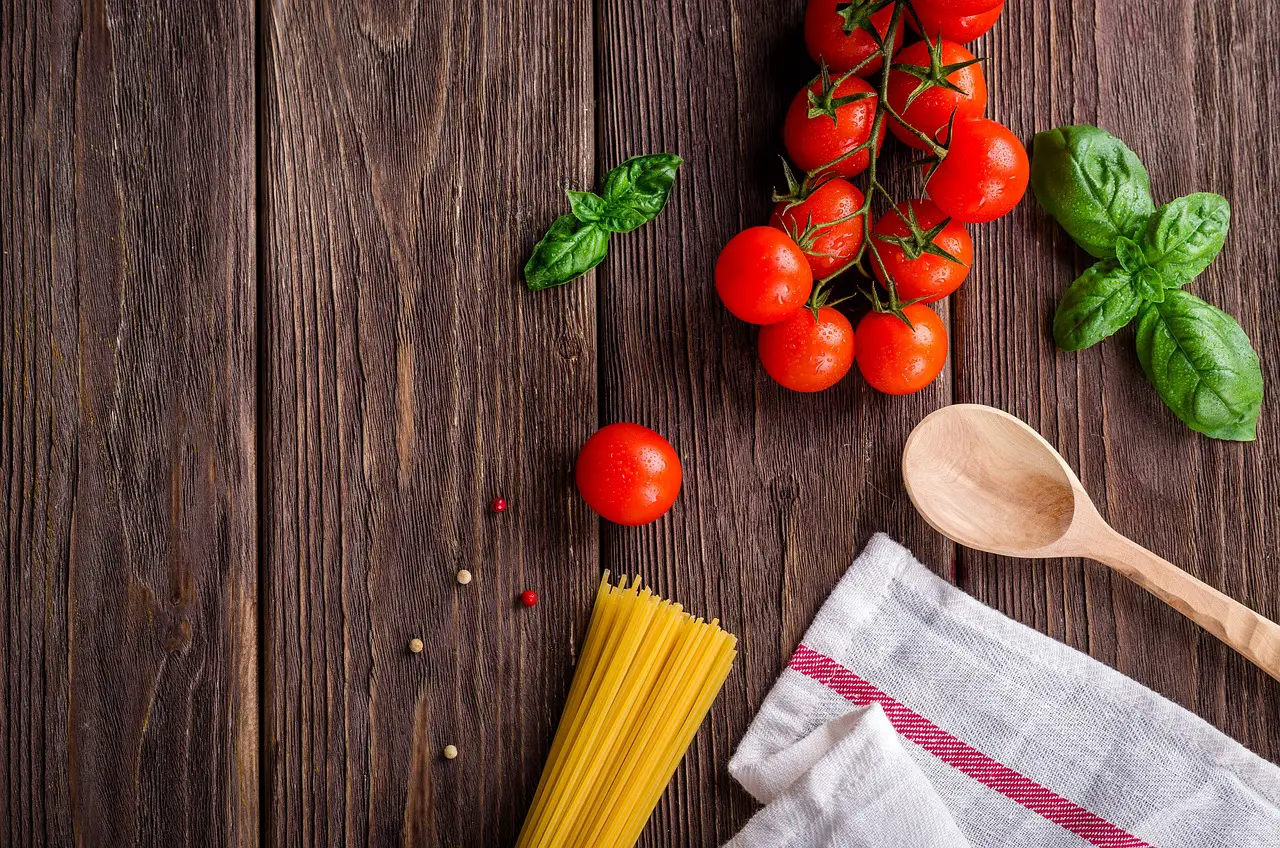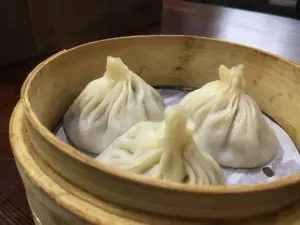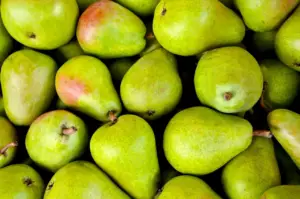If you’re interested in martial arts, you may have found yourself wondering about the differences between traditional martial arts and modern combat sports. While both share some similarities, they also have distinct characteristics that set them apart.
In Hong Kong, a city with a rich martial arts culture, it’s particularly interesting to compare the two. First, let’s take a look at the history and origin of these disciplines. Traditional martial arts in Hong Kong have a long and diverse history, with influences from China, Japan, and other parts of Asia.
Modern combat sports, on the other hand, emerged in the 20th century and are often associated with the rise of mixed martial arts (MMA) and the Ultimate Fighting Championship (UFC). By examining the origins of these practices, we can gain a better understanding of their respective training methods, philosophies, and cultural significance.
Key Takeaways
- Traditional martial arts in Hong Kong prioritize mental fortitude, self-discipline, respect, and honor, and provide a connection to the city’s history and culture.
- Modern combat sports prioritize practicality and efficiency over tradition, and focus on physical domination and achieving success in competitions or real-life confrontations.
- Facilities for modern combat sports tend to be more expensive than traditional martial arts, and use specialized gear and equipment tailored to the sport’s demands.
- The evolution of combat sports in Hong Kong will depend on the values and priorities of the athletes, coaches, and spectators who shape its future, and it is important to strike a balance between innovation and tradition in martial arts.
History and Origin
You might not realize it, but the history and origin of traditional martial arts and modern combat sports in Hong Kong have shaped their respective practices today.
Traditional martial arts, such as Wing Chun and Tai Chi, have been practiced for centuries in China and were brought to Hong Kong during the British colonial period. These practices were originally developed as methods of self-defense and were often passed down through family lineages or secret societies.
On the other hand, modern combat sports like Muay Thai and Brazilian Jiu-Jitsu were introduced to Hong Kong in the 20th century through the influence of Western martial arts and the rise of mixed martial arts competitions. These sports focus on practical fighting techniques and are often taught in a structured, competitive setting.
While both traditional martial arts and modern combat sports have their roots in ancient fighting practices, their evolution and development in Hong Kong have resulted in distinct differences in their approaches and philosophies.
Training and Techniques
Effective training and advanced techniques are crucial elements for success in the world of fighting. Traditional martial arts in Hong Kong emphasize discipline, repetition, and mastering the basics before advancing to more complex movements.
The training often includes a strong focus on forms, or kata, which are predetermined sequences of movements. Techniques such as kicks, punches, and joint locks are also practiced extensively, along with meditation and breathing exercises.
Students are expected to exhibit respect for their instructors and fellow classmates, and the training is often seen as a way to cultivate not only physical strength, but also mental fortitude and self-discipline.
On the other hand, modern combat sports in Hong Kong often prioritize practicality and efficiency over tradition. Training typically involves sparring and simulated combat scenarios, with emphasis placed on developing speed, power, and reaction time.
Techniques from various martial arts are often mixed together, with practitioners encouraged to experiment and find what works best for them. The goal is often to win competitions or survive real-life confrontations, rather than to uphold a particular code of conduct or philosophy.
While some traditional martial arts practitioners may see this approach as lacking in discipline and respect, others argue that it is simply a reflection of the changing times and needs of modern society.
Philosophy and Mindset
Now let’s focus on the philosophy and mindset behind traditional martial arts and modern combat sports in Hong Kong.
You may be interested to know that traditional martial arts place a heavy emphasis on discipline, respect, and honor.
In contrast, modern combat sports often prioritize winning and achieving success through physical domination.
Understanding the differences in mindset between these two styles can provide valuable insights into the cultural values and beliefs of Hong Kong.
Traditional Martial Arts
If you’re looking for a way to connect with Hong Kong’s rich cultural heritage, traditional martial arts are a great place to start.
Hong Kong has a long history of martial arts, with many styles originating from mainland China.
These traditional martial arts focus not only on physical techniques, but also on philosophy, morality, and self-discipline.
They are often deeply rooted in Chinese culture, with many practitioners incorporating elements such as Taoism, Buddhism, and Confucianism into their practice.
One of the most well-known traditional martial arts in Hong Kong is Wing Chun, which was famously practiced by Bruce Lee.
Other popular styles include Tai Chi, which emphasizes slow, flowing movements, and Hung Gar, which is known for its strong stances and powerful strikes.
Many traditional martial arts schools in Hong Kong also offer training in weapons, such as swords and spears.
While modern combat sports may offer more immediate physical benefits, traditional martial arts provide a deeper connection to Hong Kong’s history and culture.
Modern Combat Sports
Let’s explore the exciting world of modern combat sports and how they’re taking the fitness and sports industries by storm.
Modern combat sports refer to a range of competitive physical activities that combine elements of traditional martial arts with contemporary techniques and rules. They’re often practiced in a controlled environment, such as a gym or arena, and rely heavily on physical fitness, technique, and strategy.
Popular examples of modern combat sports in Hong Kong include Brazilian Jiu-Jitsu, Muay Thai, kickboxing, and mixed martial arts (MMA).
One of the key differences between modern combat sports and traditional martial arts is the level of competitiveness and regulation. In modern combat sports, athletes compete against each other in organized tournaments, with strict rules and safety measures in place. This allows for a more objective evaluation of skill and performance, and also provides opportunities for athletes to advance their careers and gain recognition for their achievements.
Additionally, modern combat sports often emphasize the importance of physical fitness and conditioning, encouraging practitioners to maintain a healthy and active lifestyle.
Overall, modern combat sports offer a dynamic and exciting way to stay in shape, build self-confidence, and develop practical fighting skills.
Competition and Performance
You can feel the rush of adrenaline as you watch traditional martial artists and modern combat sports athletes compete for glory and showcase their skills in Hong Kong.
In modern combat sports, athletes are typically competing in regulated environments with standardized rules and scoring systems. This creates a level playing field for competitors and allows for fair and objective judging.
Unlike traditional martial arts, modern combat sports prioritize performance and competition over self-defense and spiritual development. This focus on competition has led to the development of new techniques and training methods that are specifically designed to win fights.
As a result, modern combat sports athletes are often faster and more explosive than their traditional martial arts counterparts. Additionally, modern combat sports require a high level of physical fitness, as athletes must be able to perform at a high level for extended periods of time.
These factors combine to create a thrilling and intense viewing experience for spectators, as athletes push themselves to the limit in pursuit of victory.
Equipment and Attire
The attire and equipment used in combat sports are essential for both safety and performance. In traditional martial arts, the attire is usually a uniform known as a gi, which typically consists of a jacket and pants made of cotton. The gi is designed for comfort and ease of movement during practice and competition. On the other hand, modern combat sports such as MMA and boxing require more specialized attire and equipment.
In the table below, you can see a comparison of the attire and equipment used in traditional martial arts and modern combat sports in Hong Kong.
| Attire/Equipment | Traditional Martial Arts | Modern Combat Sports |
|---|---|---|
| Clothing | Gi (cotton uniform) | Compression shorts, rash guards, MMA shorts |
| Protective Gear | Headgear, mouthguard, groin protector, shin guards, gloves | Headgear, mouthguard, groin protector, shin guards, gloves |
| Training Equipment | Wooden dummy, punching bag, focus pads, kicking shield | Heavy bag, speed bag, grappling dummy, focus mitts |
As you can see, modern combat sports require more specialized clothing such as compression shorts, rash guards, and MMA shorts. These clothes are designed to provide better mobility and flexibility while also improving performance during training and competition. Additionally, modern combat sports require more protective gear such as shin guards, which are used to protect the shins during kicks, and gloves, which are used to protect the hands during strikes. Finally, modern combat sports utilize different types of training equipment such as a heavy bag, which is used to practice striking techniques, and a grappling dummy, which is used to practice ground fighting techniques. Overall, the attire and equipment used in modern combat sports are more specialized and tailored to the specific demands of the sport, while traditional martial arts prioritize comfort and tradition.
Accessibility and Affordability
When searching for combat sports facilities, it’s important to consider accessibility and affordability to ensure that everyone has the opportunity to participate in the sport. In Hong Kong, modern combat sports such as boxing, Muay Thai, and MMA are becoming more popular, but the accessibility and affordability of these facilities are still limited compared to traditional martial arts.
-
Accessibility:
-
Modern combat sports facilities are often located in commercial districts or industrial areas, making them less accessible to the general public.
-
Traditional martial arts facilities, on the other hand, are often located in residential areas, making them more accessible to the local community.
-
Some modern combat sports facilities also require membership fees or contracts, which can deter people from trying the sport.
-
Affordability:
-
Modern combat sports facilities tend to be more expensive than traditional martial arts facilities due to the cost of equipment and facilities.
-
Traditional martial arts facilities often have a lower cost of entry, with some offering free or low-cost classes to the local community.
-
Some modern combat sports facilities offer discounts or promotions to attract new members, but these may still be out of reach for some individuals.
Overall, while modern combat sports are gaining popularity in Hong Kong, the accessibility and affordability of these facilities are still limited compared to traditional martial arts. This may prevent some individuals from trying the sport or continuing their training, highlighting the need for more accessible and affordable options for combat sports in the city.
Community and Culture
When it comes to the community and culture surrounding martial arts in Hong Kong, there are two main categories: Traditional Martial Arts and Modern Combat Sports.
Traditional Martial Arts tend to be deeply rooted in history and tradition, often with a focus on discipline and respect.
On the other hand, Modern Combat Sports are a more recent development, with a focus on competition and practical self-defense techniques.
Both have their own unique community and culture, and exploring these differences can shed light on the diverse martial arts landscape in Hong Kong.
Traditional Martial Arts
Practicing traditional martial arts in Hong Kong is a way to connect with the city’s rich cultural heritage. It allows you to learn and appreciate the movements, techniques, and philosophies that have been passed down for generations.
Here are three ways in which traditional martial arts can benefit you:
-
Physical fitness: Traditional martial arts require discipline, focus, and strength. Practicing them can improve your overall fitness and help you develop better coordination, balance, and flexibility.
-
Mental discipline: Traditional martial arts emphasize the importance of mental discipline as much as physical training. You learn to control your emotions, stay focused, and develop a sense of inner calmness.
-
Cultural appreciation: Traditional martial arts are deeply rooted in Chinese culture, and practicing them can help you understand and appreciate the customs, values, and traditions of Hong Kong. You become part of a community that values respect, humility, and self-improvement.
Practicing traditional martial arts in Hong Kong can be a fulfilling and enriching experience. It offers physical, mental, and cultural benefits that can help you grow and develop as a person.
Modern Combat Sports
Now that we have discussed traditional martial arts, let’s shift our focus to modern combat sports. In Hong Kong, modern combat sports have gained significant popularity in recent years, with many individuals opting to train in disciplines such as Muay Thai, Brazilian Jiu-Jitsu, and boxing. These sports are often seen as a more practical form of self-defense and are backed by a competitive scene that allows practitioners to test their skills against others.
One way to understand the differences between traditional martial arts and modern combat sports is to compare the two in terms of their training methods and goals. The table below illustrates some of the key differences:
| Traditional Martial Arts | Modern Combat Sports |
|---|---|
| Emphasis on forms and patterns | Emphasis on sparring and competition |
| Focus on philosophy and spiritual development | Focus on physical fitness and practical self-defense |
| Often practiced in a traditional setting | Often practiced in a gym or studio setting |
| Techniques may be more stylized | Techniques are more focused on effectiveness in real-world situations |
| May take longer to achieve proficiency | Can lead to faster progress due to more intense training |
While traditional martial arts have their own merits, modern combat sports offer a practical and efficient way to learn self-defense. Additionally, the competitive aspect of these sports can be a motivating factor for many individuals, pushing them to improve their skills and reach new levels of proficiency. Overall, the rise of modern combat sports in Hong Kong reflects a growing interest in practical forms of self-defense and a desire for more intense physical training.
Future and Evolution
As combat sports continue to gain popularity in Hong Kong, it’s exciting to think about how they will evolve and shape the future of martial arts. With advancements in technology and training methods, we can expect combat sports to become more sophisticated and nuanced.
For instance, the use of data analytics and wearable technology can help athletes and coaches optimize their training and improve performance. Additionally, we can expect to see more cross-training between different combat sports, as athletes seek to develop a more well-rounded skill set.
However, as combat sports evolve and become more mainstream, there may also be a loss of tradition and cultural significance. While modern combat sports are undoubtedly exciting to watch and participate in, they may not carry the same historical and cultural significance as traditional martial arts.
It’s important to strike a balance between innovation and tradition, so that future generations can appreciate and learn from both aspects of martial arts. Ultimately, the evolution of combat sports in Hong Kong will depend on the values and priorities of the athletes, coaches, and spectators who shape its future.
Frequently Asked Questions
How many martial arts schools are there in Hong Kong?
You may be interested to know that there are over 1,000 martial arts schools in Hong Kong, offering a variety of styles and techniques. These schools range from traditional ones that have been around for decades to newer ones that focus on modern combat sports.
The popularity of martial arts in Hong Kong can be attributed to its rich history and culture, as well as the increasing interest in fitness and self-defense. However, it’s important to note that the quality of instruction and facilities can vary greatly among these schools.
It’s recommended to do thorough research and seek recommendations before enrolling in a martial arts program.
What is the average age of martial arts practitioners in Hong Kong?
On average, martial arts practitioners in Hong Kong range from children as young as four years old to adults in their 50s. However, the majority of practitioners fall within the 20-40 age range. This is because many people in Hong Kong start practicing martial arts as a form of exercise or self-defense during their college years and continue into adulthood.
Additionally, there’s been a recent surge in popularity of combat sports such as MMA, which tend to attract a younger demographic. Nevertheless, traditional martial arts schools still have a significant following among older practitioners who value the cultural and historical significance of these practices.
Overall, the age range of martial arts practitioners in Hong Kong reflects the diverse reasons for practicing and the wide variety of martial arts styles available.
What is the percentage of female martial arts practitioners in Hong Kong?
In Hong Kong, the percentage of female martial arts practitioners varies depending on the type of martial art. According to a survey conducted by the Leisure and Cultural Services Department in 2015, women make up around 20% of the total number of martial arts practitioners in Hong Kong.
However, this percentage differs among different styles of martial arts, with some having a higher percentage of female practitioners than others. For example, Tai Chi and Wing Chun tend to attract more female practitioners, while styles such as Muay Thai and Brazilian Jiu-Jitsu have a lower percentage of female practitioners.
Overall, the number of female martial arts practitioners in Hong Kong has been steadily increasing in recent years, with more women taking up the practice for fitness, self-defense, and personal development.
What is the most popular martial art in Hong Kong?
The most popular martial art in Hong Kong is undoubtedly Wing Chun. Originating in southern China, Wing Chun has a long and storied history in the city and has become an integral part of its cultural heritage.
Its popularity can be attributed to the fact that it’s an effective self-defense system that can be learned quickly and easily, making it accessible to people of all ages and abilities. Additionally, the popularity of Wing Chun has been boosted by its association with the legendary Bruce Lee, who famously trained in the style under the tutelage of Grandmaster Ip Man.
Despite the rise of modern combat sports in Hong Kong, Wing Chun remains a beloved martial art and continues to attract new practitioners every year.
What impact have martial arts had on the tourism industry in Hong Kong?
Martial arts have had a significant impact on the tourism industry in Hong Kong. Tourists flock to the city to experience the culture and traditions of these practices, as it has a rich history and diverse range of martial arts. Visitors can participate in classes or watch demonstrations to learn more about the different styles, from the famous Wing Chun to Tai Chi.
Moreover, Hong Kong hosts several international martial arts competitions, drawing in athletes and fans from around the world. Martial arts serve as a unique attraction for tourists and contribute to the city’s vibrant cultural scene.
Overall, martial arts have become a significant driver of tourism in Hong Kong, showcasing the city’s rich cultural heritage and traditions.
Conclusion
Congratulations on reaching the end of this article! You now have a clearer understanding of the differences between traditional martial arts and modern combat sports in Hong Kong.
While both have their unique history and origins, training and techniques, philosophy and mindset, competition and performance, equipment and attire, accessibility and affordability, community and culture, as well as future and evolution, they cater to different preferences and goals.
For those who are interested in learning self-defense, developing discipline and character, and preserving cultural heritage, traditional martial arts such as Wing Chun, Tai Chi, and Kung Fu may be more suitable. On the other hand, for those who are attracted to physical challenges, adrenaline rushes, and entertainment, modern combat sports such as MMA, boxing, and Muay Thai may be more appealing.
Regardless of which path you choose, it’s important to remember that martial arts and combat sports are not just about fighting or winning, but also about personal growth, mutual respect, and social impact. By embracing the values and principles of martial arts and combat sports, you can not only enhance your physical and mental well-being but also contribute to the betterment of society.
So, whether you’re a beginner or a seasoned practitioner, keep an open mind, train hard, and enjoy the journey!



































































































